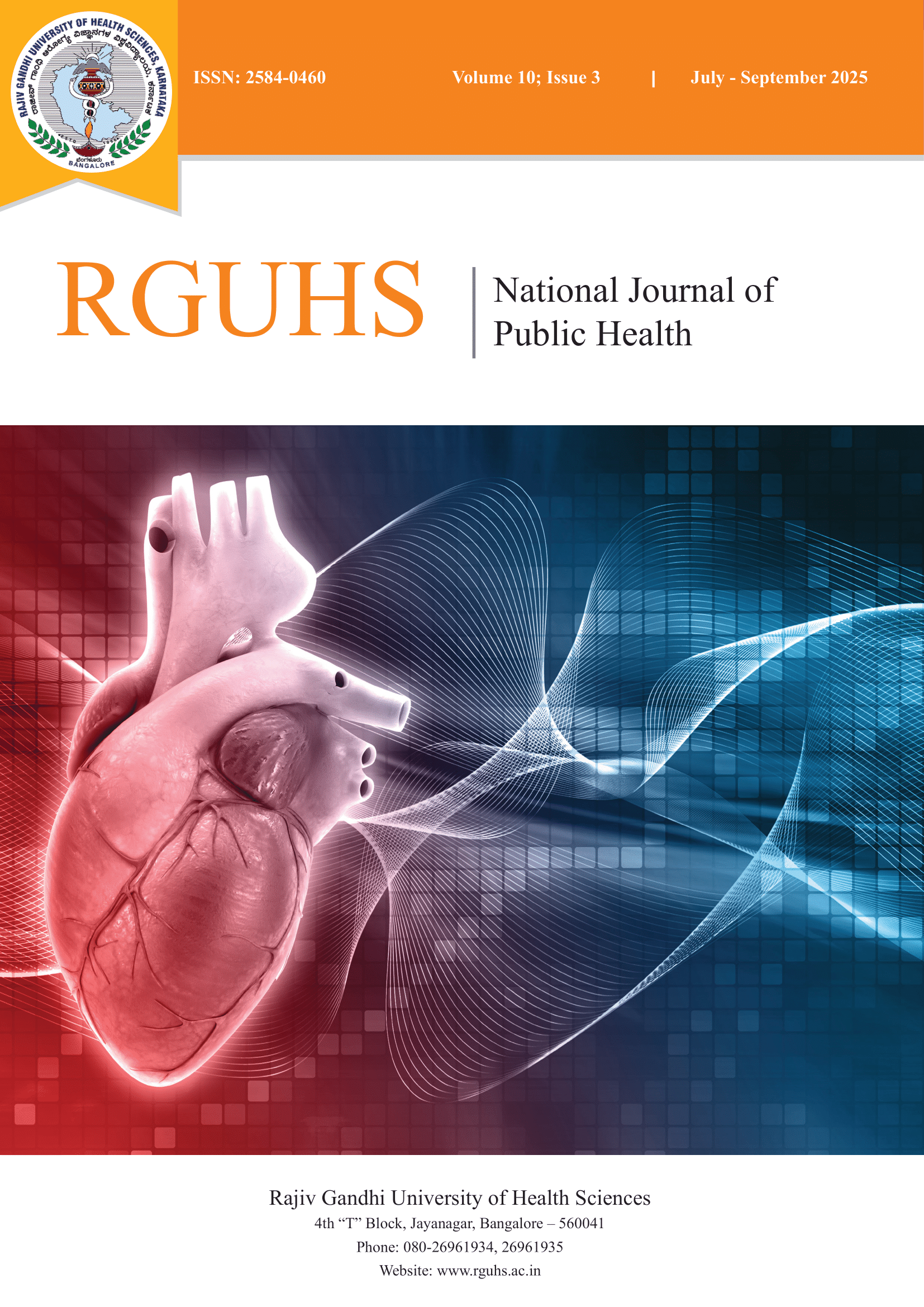AHEAD OF PRINT
Cover

RGUHS Nat. J. Pub. Heal. Sci Vol No: 10 Issue No: 3 eISSN: 2584-0460
Article Submission Guidelines
Dear Authors,
We invite you to watch this comprehensive video guide on the process of submitting your article online. This video will provide you with step-by-step instructions to ensure a smooth and successful submission.
Thank you for your attention and cooperation.